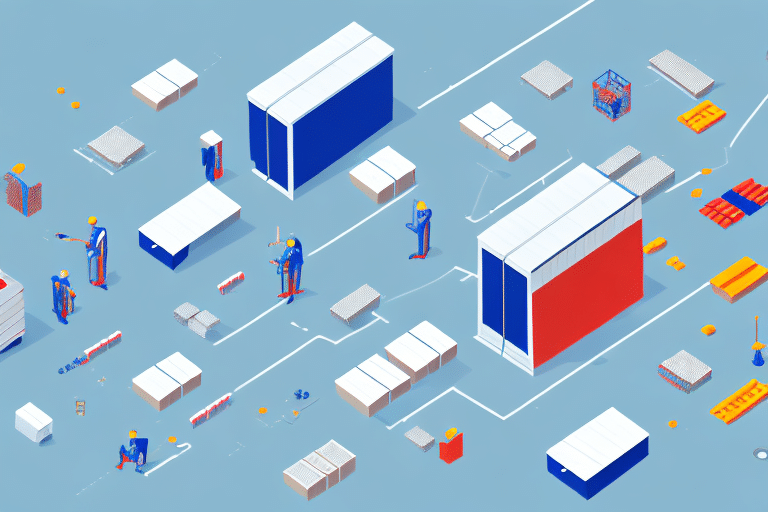What Is Kitting? A Comprehensive Guide to Understanding This Process
If you're unfamiliar with the term kitting, you're not alone. While the process has been around for decades, it has recently gained popularity as a strategic approach to supply chain management across various industries. Fundamentally, kitting involves gathering individual products or components into a single package or kit. This kit is then sold or distributed as a unit, enabling businesses to streamline their manufacturing and distribution processes.
The Evolution of Kitting: From Manufacturing to E-commerce
Kitting has its roots in the Industrial Revolution, where it was initially used in manufacturing to assemble components for ease of transport and assembly. Over time, its application has expanded to industries such as automotive, healthcare, and retail.
In the automotive industry, kitting is employed to create engine rebuild kits, ensuring that all necessary parts are available for efficient assembly. The healthcare sector utilizes kitting to assemble surgical trays, which contain all the instruments required for specific procedures, enhancing operational efficiency and patient care.
With the rise of e-commerce, kitting has become even more essential. According to a Forbes article, kitting allows online retailers to offer customized product bundles, improve order accuracy, and reduce shipping costs. These advantages have made kitting a pivotal component in modern supply chain strategies.
Benefits of Kitting in Supply Chain Management
Efficiency and Waste Reduction
Kitting helps reduce waste and inefficiency within the supply chain. By grouping individual components into a single package, businesses can minimize packaging waste and streamline the production and shipping processes. This consolidation often leads to a reduction in overall shipping volumes, contributing to cost savings and environmental sustainability.
Improved Inventory Management
Effective inventory management is crucial for any business. Kitting allows companies to pre-assemble kits of frequently used components, reducing the time and effort needed to pick and pack individual items. This method enhances order accuracy, decreases fulfillment times, and can lead to higher customer satisfaction rates.
Cost Savings
By purchasing components in bulk and assembling them into kits, businesses can take advantage of bulk purchasing discounts. This approach not only lowers the cost of goods sold but also improves profit margins. Additionally, streamlined operations and reduced shipping costs further enhance overall cost-effectiveness.
Implementing a Successful Kitting Strategy
Identifying Components
The first step in implementing a kitting strategy is to identify the specific components or products to include in your kits. Analyze your inventory to determine which items are frequently ordered together and assess customer preferences to create desirable kits.
Packaging and Labeling
Effective packaging and labeling are essential for a successful kitting process. Use clear and informative labels to ensure that each kit is easily identifiable and that all included components are accounted for. This practice reduces errors and enhances the customer experience.
Assembly Process
Establish a standardized process for assembling and distributing kits. Implementing an organized workflow can increase efficiency and ensure consistency in the quality of each kit. Automation tools and software can aid in managing this process, reducing manual labor, and minimizing the risk of errors.
Continuous Improvement
Regularly review and update your kitting strategy to adapt to changing business needs and market trends. Gather feedback from customers and analyze sales data to refine your kits, ensuring they continue to meet customer demands and contribute to business growth.
Leveraging Technology to Optimize Kitting
Technology plays a crucial role in enhancing the kitting process. Advanced software solutions can manage inventory, track the assembly process, and optimize supply chain logistics.
- Automation: Automated systems can generate pick lists and assembly instructions, reducing manual labor and minimizing errors.
- Real-Time Tracking: Technologies like barcodes and RFID tags enable real-time tracking of inventory, providing greater visibility and control over the kitting process.
- Data Analytics: Analyzing data from kitting operations can identify trends, optimize inventory levels, and improve overall efficiency.
According to a McKinsey report, integrating digital technologies into supply chain management can lead to significant improvements in efficiency and cost reduction.
Overcoming Common Challenges in Kitting
Inventory Management Issues
Maintaining accurate inventory levels is essential for effective kitting. Implementing robust inventory management systems can help track components in real-time, preventing stockouts and overstock situations.
Supply Chain Disruptions
Supply chain disruptions can hinder the kitting process. Developing contingency plans, such as having backup suppliers or alternative sourcing options, can mitigate the impact of unforeseen events.
Quality Control
Ensuring consistent quality across all components is vital. Establishing strict quality control measures and regular inspections can prevent defective items from entering the kit, maintaining customer satisfaction.
Customization Challenges
Customers may require specific modifications to their kits, complicating the assembly process. Implementing a flexible kitting system that allows for customization without sacrificing efficiency is key to addressing this challenge.
Future Trends and Innovations in Kitting
The kitting landscape is continually evolving, driven by advancements in technology and changing market demands.
- Increased Automation: Robotics and AI are expected to play a larger role in the kitting process, enhancing speed and accuracy.
- 3D Printing: The adoption of 3D printing technology could revolutionize kitting by enabling on-demand production of customized components.
- Sustainable Practices: There is a growing emphasis on sustainable packaging and reducing the environmental impact of kitting operations.
- Enhanced Data Analytics: Advanced analytics will provide deeper insights into kitting operations, driving continuous improvement and innovation.
As highlighted in a Supply Chain Digital article, these trends are set to shape the future of kitting, making it more efficient, flexible, and sustainable.
Real-World Applications and Success Stories
Automotive Industry
Companies like Fel-Pro have successfully implemented kitting for engine rebuild kits, resulting in increased manufacturing efficiency and reduced waste.
Retail Sector
Retailers such as Stitch Fix utilize kitting to create personalized clothing boxes for customers, enhancing the shopping experience and fostering customer loyalty.
Healthcare Industry
Medical facilities use kitting to assemble surgical trays and medical kits, ensuring that all necessary instruments and supplies are readily available for procedures, thereby improving operational efficiency and patient outcomes.
Enhancing Customer Satisfaction and Loyalty Through Kitting
Kitting can significantly improve customer satisfaction by offering a convenient and streamlined shopping experience. By bundling complementary products, businesses can meet customer needs more effectively and provide value-added packages that enhance the overall customer experience.
Moreover, customizable kits allow businesses to cater to individual preferences, increasing the likelihood of repeat purchases and fostering long-term customer loyalty.
Kitting vs. Bundling: Understanding the Differences
While kitting and bundling are often used interchangeably, they have distinct differences:
- Kitting: Involves the physical assembly and packaging of individual components into a single kit. Each kit is tailored to specific configurations and can be customized.
- Bundling: Refers to the practice of selling multiple products together as a package deal without necessarily grouping them into a single package. Bundling is often used for promotional purposes and pricing strategies.
Understanding these differences is crucial for businesses to effectively implement the most suitable strategy based on their goals and customer needs.
Sustainable Kitting Practices
As environmental concerns become increasingly important, businesses are adopting sustainable kitting practices to minimize their ecological footprint.
- Eco-Friendly Packaging: Utilizing biodegradable or compostable materials reduces waste and supports sustainability.
- Efficient Packaging Designs: Designing packaging that uses fewer materials without compromising the safety and integrity of the kit.
- Waste Reduction Strategies: Implementing processes that minimize excess packaging and promote recycling.
Adopting sustainable practices not only benefits the environment but also appeals to eco-conscious consumers, enhancing brand reputation and customer loyalty.
Case Studies: Success Stories of Kitting Implementation
Fel-Pro Automotive
Fel-Pro, a leading automotive parts supplier, developed a kitting process for engine rebuild kits. This initiative increased manufacturing efficiency by 20% and reduced material waste by 15%, demonstrating the tangible benefits of effective kitting strategies.
Stitch Fix Retail
Stitch Fix employs kitting to create customized clothing boxes for their subscription service. This approach has led to a 30% increase in customer retention rates and significantly enhanced the overall shopping experience for their clients.
Healthcare Providers
Various hospitals have implemented kitting for surgical procedures, resulting in a 25% reduction in preparation time and improved surgical outcomes. By ensuring that all necessary instruments and supplies are readily available, healthcare providers can deliver more efficient and reliable patient care.




















